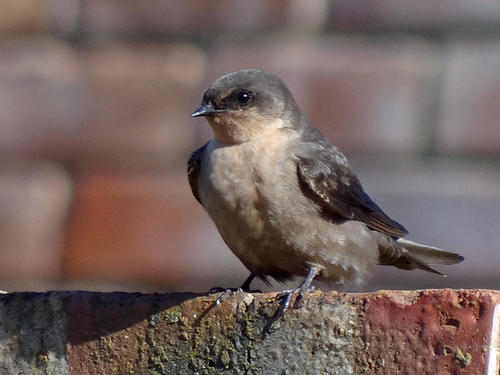
Rock Martin
The Rock Martin (*Ptyonoprogne fuligula*) is a small, robust bird belonging to the swallow family. It is known for its adaptability to rocky and mountainous environments, often found nesting on cliffs, in gorges, and even on human-made structures like bridges and buildings. Unlike many swallows, it is less migratory, often remaining in the same general area year-round, although some populations undertake altitudinal movements. The Rock Martin plays an important ecological role as an insectivore, controlling populations of flying insects. It doesn't hold significant cultural significance, but its presence is a familiar sight in its arid and semi-arid habitats.
12-15 cm
Length
26-30 cm
Wingspan
Least Concern
Conservation Status
Distribution
The Rock Martin has a wide distribution, ranging across Africa, the Middle East, and parts of South Asia. Its range extends from sub-Saharan Africa north to Morocco and east through the Arabian Peninsula to Pakistan and northwestern India. Altitudinal ranges vary from sea level to over 3,000 meters in mountainous regions.
Lifespan
Typically 3-5 years in the wild, although some individuals may live longer.
Rock Martin's Habitat
Habitat Types
Rocky cliffs, Gorges, Mountain slopes, Buildings, Bridges, Quarries
Climate Zones
Arid, Semi-arid, Temperate, Tropical
Adaptations
Rock Martins are well-adapted to arid environments. Their drab plumage provides camouflage against rocky backdrops. Their strong feet and claws allow them to cling to vertical surfaces. They can tolerate a wide range of temperatures.
Variations
Several subspecies are recognized, differing slightly in plumage coloration and size. These variations are often linked to geographic isolation and local environmental conditions. For example, populations in drier regions tend to have paler plumage.
Appearance
Breeding Plumage
Little to no difference between breeding and non-breeding plumage.
Seasonal Feather Changes
Minimal seasonal variation; plumage may appear slightly duller after molting.
Sex Based Plumage Differences
Males and females have very similar plumage, making them difficult to distinguish visually.
Notable Features
Drab brown upperparts, Pale underparts, Short, square tail, Small white spots on the tail feathers (visible in flight)
Diet and Feeding
Primary Foods
Flying insects, Spiders
Foraging Behavior
Rock Martins are aerial insectivores, catching their prey on the wing. They often forage near cliffs and other vertical surfaces, using updrafts to their advantage. They may also glean insects from surfaces.
Specializations
Their broad gape and agile flight allow them to capture a wide variety of flying insects efficiently.
Seasonal Diet Variations
Diet may vary slightly depending on insect availability. During periods of insect scarcity, they may consume more spiders or take smaller prey items.
Behavior
Social Structure
Rock Martins are often seen in pairs or small groups, especially during the breeding season. They may form larger flocks outside of the breeding season.
Communication
Soft, twittering calls, Chattering vocalizations during flight and at the nest
Migration
Most populations are resident or undertake short-distance altitudinal movements. Some populations in the northern parts of their range may migrate shorter distances.
Territorial or Group Behaviors
They defend a small territory around their nest site. Outside of the breeding season, they are more gregarious and may form communal roosts.
Conservation
Threats
Habitat loss (due to quarrying and development), Pesticide use (reducing insect prey), Climate change (potentially altering insect emergence patterns)
Protection Programs
General protection of swallow species under various national and international laws.
Local National Laws
Protected under wildlife legislation in many countries within its range.
Population Trend
Stable
Population Estimates
While precise global estimates are difficult, the population is considered large and widespread.
Interesting Facts
Rock Martins often reuse their nests year after year.
They may repair and add to existing nests, creating substantial mud structures over time.
They are highly adaptable to human-altered landscapes.
They readily nest on buildings, bridges, and other artificial structures, demonstrating their flexibility.
They frequently nest in close proximity
Rock martins can nest colonially where suitable nesting space, like crevices, are found
They can drink in flight.
Like other swallows, they skim the surface of water bodies to drink while flying.
Faqs about Rock Martin
How can I distinguish a Rock Martin from other swallows?
Look for its drab brown plumage, square tail, and preference for rocky habitats. The small white spots on the tail are also a good identifying feature.
Are Rock Martins migratory?
Most populations are resident or make only short altitudinal movements. Some northern populations might migrate short distances.
What do Rock Martins eat?
They primarily eat flying insects, which they catch on the wing.
Where do Rock Martins build their nests?
They build mud nests on cliffs, rock faces, and increasingly on human-made structures like buildings and bridges.
Copyright @ Nature Style Limited. All Rights Reserved.
 English
English